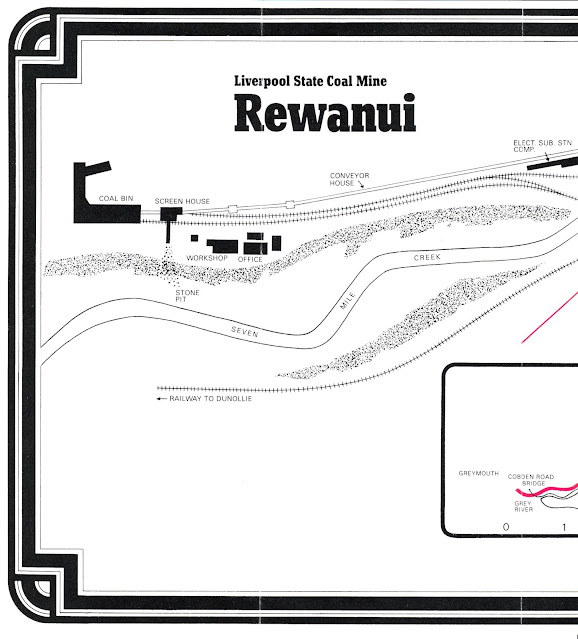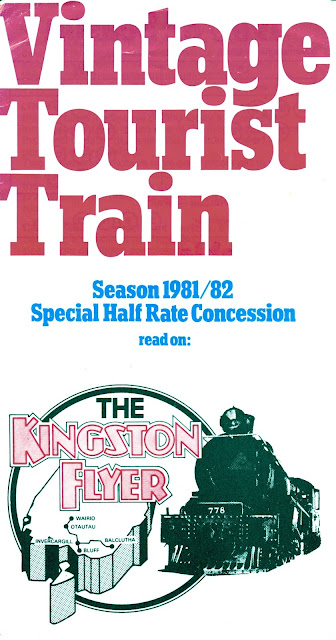 |
| Bay Express on-board leaflet |
 |
| Tranz Scenic ad on the back of the leaflet |
 |
| Bay Express Wine Experience package tours |
 |
Bay Express leaflet 1990 description of service and route
|
 |
| Bay Express leaflet 1990 description of route |
The peak of Hawke's Bay passenger rail service was the Endeavour from 1972 until 1981, using refurbished 56ft first class cars in a 2-1 configuration with a full buffet car, similar to the Southerner. The Wellington-Napier route had a service with wide comfortable reclining seats, and a sit-down full cooked meal service, giving Hawke's Bay the most comfortable regional rail service in New Zealand for decades, not to be rivalled until the most recent years of the TranzAlpine. However, the Silverfern accident near Waiouru in 1981 saw the end of that, with withdrawal of the train to temporarily replace the badly damaged railcar from Wellington to Auckland. Hawke's Bay spent eight years with a much more austere rail service.
From much more basically appointed 56ft cars with suburban style (old 2nd class) bench seats, to the 88-seat "grassgrub" de-engined AC class cars until metal fatigue rendered them unsafe, to modestly refurbished 56ft cars with coach type seating, none of the
Wellington-Gisborne express consists would have any on-board service at all. It was the introduction of the Bay Express in 1989 that uplifted Hawke's Bay rail services to a decent level of comfort, with on-board buffet (ending the Palmerston North refreshment stop), wide scenic windows and seating competitive with coaches. Of course the Napier-Gisborne segment, hastily added in 1981 to save on rolling stock (replacing the separate Napier-Gisborne service) was cancelled permanently in 1988 following Cyclone Bola closing the line to Gisborne, noting that patronage from Napier-Gisborne only occasionally exceeded the capacity of a bus.
The Bay Express from 1989 couldn't replicate the Endeavour because that configuration was no longer economic. A 2-1 seating layout reduced capacity by a quarter, so a more standard 2-2 configuration meant that each car could at least be about the accommodation of a road coach (notwithstanding the 56ft cars weighed three times as much), and a fully dedicated buffet car could never generate enough revenue to pay for the cost of staffing, equipping and maintaining it, and the fuel to haul it, with a train of that capacity, so a buffet bar/servery in part of a car was a reasonable compromise. The Bay Express had many of the features of the TranzAlpine and Coastal Pacific expresses, as the NZ Rail Intercity business sought to make the route viable, it was definitely an uplift of service standards to stem and reverse the decline in patronage seen from 1981 to 1989.
The first leaflet is from 2001 in the final months of the service, the second is a 1990 publicity leaflet highlighting the service from its early days.
The Bay Express part of this leaflet has a short description of the route and a map depicting it, although not all of the towns highlighted on the route map were not stops for the train (e.g., Waipawa). Travel time was 5hrs 22min northbound and 5hrs 31min southbound. A photo of the train on the Paremata Bridge showing the standard three-car consist is included, although often the train only operated with two cars (its final trip had five). However, by the time of the last service, it was averaging around 45 passengers each way (although that included passengers who only travelled a portion of the route). As a result, TranzRail did not sell the service as part of the TranzScenic business at the time, and unlike the Southerner, there was no interest by the Government of the day in considering whether to subsidise the service for its tourism potential.
There is very little information about the train in the 2001 leaflet, which had on board a cafe/rear observation car. It may be reflective of the paucity of interest by TranzRail in the TranzScenic business by 2001.
This is a stark contrast to the second leaflet above, from 1990, shortly after the service was introduced (as a major upgrade to the austere Wellington-Napier express). The leaflet shows the full timetable with all stops, promotes visiting Hawke's Bay for wine tours, describes the onboard comfort, including Devonshire Tea from the buffet, and the observation lounge at the rear. The stylised map includes depiction of the viaducts on the line, and a brief description of Wellington, Hastings and Napier as destinations (apologies to Palmerston North surely!). Finally a brief history of the route, describing how the service originally took over 11 hours with two changes of train. It is clear in 1990 that NZ Rail, having resuscitated long-distance services under the Intercity brand and refurbished a train to be competitive, was proud of what it had done, and was making an effort to promote the service to travellers.
I rode the Bay Express multiple times when I lived in Wellington to visit my parents retired in Napier, so I used it regularly to spend weekends, although it meant taking a Friday off to travel and spending the Sunday afternoon returning (or sometimes taking the Monday off as well). It was always a comfortable, albeit relatively slow trip.



















































